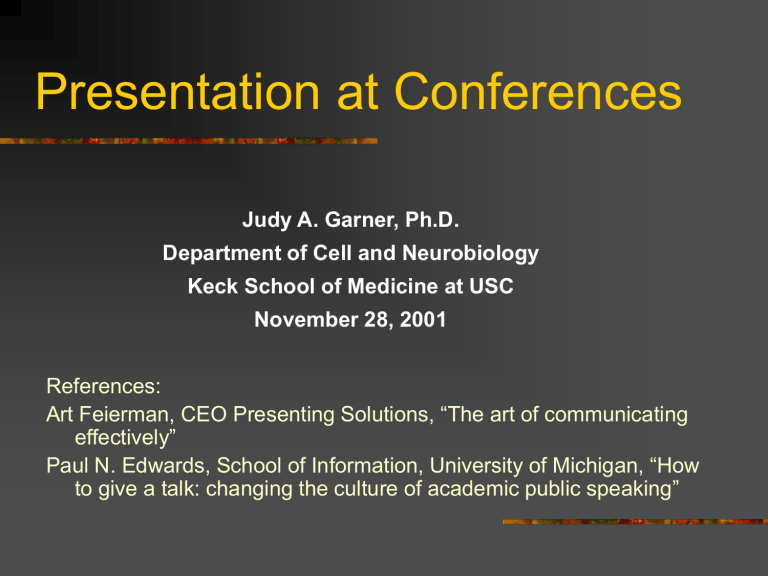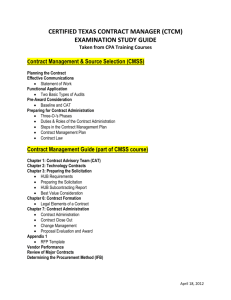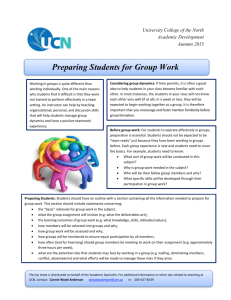Presentation at Conferences

Presentation at Conferences
Judy A. Garner, Ph.D.
Department of Cell and Neurobiology
Keck School of Medicine at USC
November 28, 2001
References:
Art Feierman, CEO Presenting Solutions, “The art of communicating effectively”
Paul N. Edwards, School of Information, University of Michigan, “How to give a talk: changing the culture of academic public speaking”
Presentation at Conferences
The awful academic talk: what to avoid
Principles of effective talks
Structure of a presentation
Preparing data for presentation
Preparing the oral presentation: Practice and planning
The Awful Academic Talk: What to AVOID
Why do brilliant people give awful talks?
Stage fright
Lack of preparation (winging it)
The academic culture
Principles of Effective Talks
Communicate your arguments and ideas effectively
Persuade your audience that they are
True
Be interesting and entertaining (Keep your audience “involved” and focused on your information)
Structure of a Presentation:
FIRST THINGS FIRST: Planning
The rule of “Tell’em”….
Key points: Summary/Conclusion Slide
FIRST
HOW MANY KEY POINTS can you really present? LESS IS MORE.
KISS!---Keeping it clear!
PREPARING YOUR DATA:
Art of Visual Presentation
Visual aids/Powerpoint, etc. –
New electronic media: potential pitfalls
The medium vs the message
Summary or Interpretation of Data vs
Actual Data: what is a good ratio
Graphical presentation: Obfuscation vs simplicity
Preparing for the presentation
Know your audience
Talk, don’t read
Use visual aids
Move (but not too much!), make eye contact
Vary your pitch, Speak loudly and clearly
Finish your talk in the time allotted
Rehearse
Summarize
PREPARING FOR THE PRESENTATION
REHEARSE
Don’t memorize (but DO plan how to present complex ideas)
Use notes only sparingly
The importance of non-verbal communication
Pace yourself



